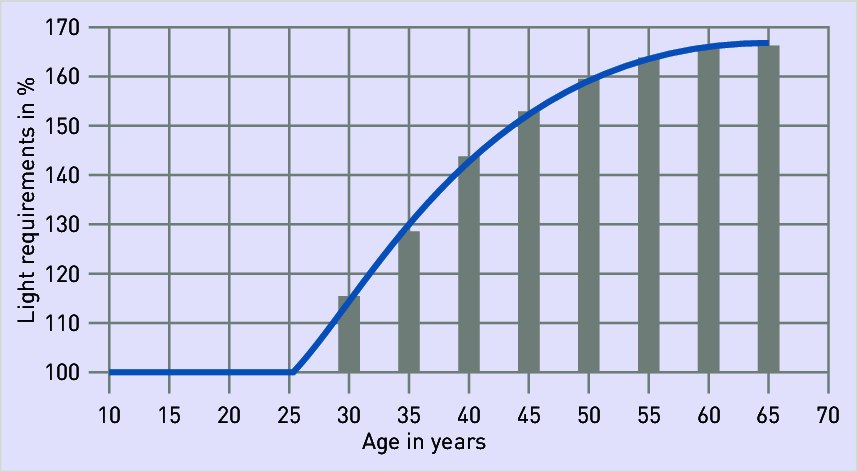The performance capability of a person with a normally synchronised inner clock is at its peak between ca. 10 a.m. and noon, then decreases slightly over the course of the afternoon and then increases again before dropping to a minimum during the night. Depending on the chronotype ("owl" or "lark"), this rhythm can be slightly shifted in either direction. Corresponding to the sleep/wake rhythm, the daily progression of performance capability can also be supported by light.
High colour temperatures have an impact on cognitive performance capability, attention and speed of processing information. The handling of creative tasks can be supported by light with an increased blue portion. Besides the light spectrum, the intensity and duration of light exposure is highly important. While the illuminance outdoors, depending on cloudiness, is often several 10.000 lx, illuminance indoors is usually significantly lower. An increase in intensity over an extended period of time can impact attention, concentration, physical and cognitive performance as well as memory in a positive way. As a rule: targeted, influence of general performance through light can lead to increased productivity in the workplace. However, continuous exposure to bright, blue light without corresponding relaxation phases is not productive.
One of the most effective areas of application is office lighting. Varying lighting phases increase concentration, creativity and performance. However, it is not only activating light that is effective in this respect, providing space for relaxation through calming light is also important. The same applies for lighting in educational facilities, where circadian rhythm support improves attention and concentration while error rates are reduced at the same time.
